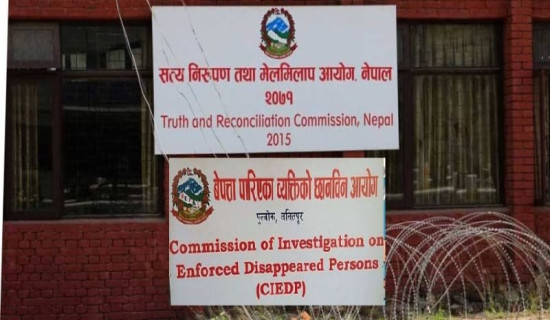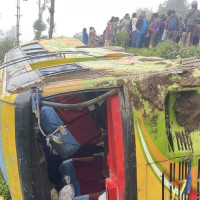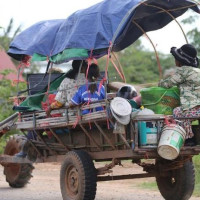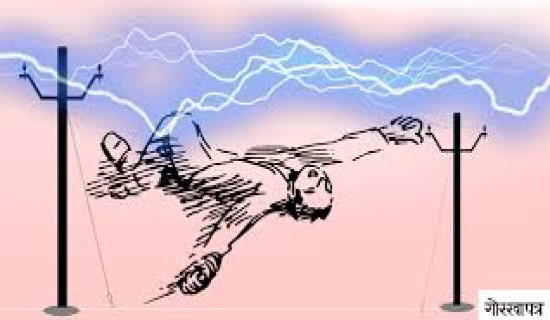- Saturday, 2 August 2025
Dolphins make rare winter appearance in Karnali
By Abinash Chaudhary,Dhangadhi, Jan. 20: Dolphins, which used to be seen only during the rainy season in the Karnali River and its tributaries, have started appearing in the Karnali this winter.
The dolphins, which used to appear in the Mohana, Pathraiya, Kandra, the tributaries of the Karnali only during the rainy season in the past, are now easily seen in the Karnali even in winter. A small number of dolphins are appearing in the lower areas of the Karnali including Tikapur Municipality-8, Sri Lanka area, and Arunaphanta.
According to Hirulal Dangaura, a conservationist, the dolphins come to the tributaries only during the rainy season but stay in the Karnali forever. He said that dolphins were appearing in the Karnali throughout the winter this year.
The depth of water in the river is necessary for dolphins to live. Now there is no depth in other rivers except for the Karnali.
Bhojraj Dhungana, president of Dolphin, Aquatic and Biodiversity Conservation Nepal, said that after the water level in the Mohana, Pathraiya and Kanda rivers decreased, dolphins returned to the Karnali River.
He informed that up to seven dolphins appeared in the Karnali River this winter. “We saw seven dolphins last week, but one or two are appearing at other times too,” he added.
The Gangetic dolphins, which are rare in the world, prefer to live and feed only in clean water. Dolphins, which are considered to be semi-blind, use waves to find their food and groups. Similarly, the dolphins of this species know the possible danger of waves.
An adult dolphin is said to be weighed between 100 and 160 kg and can live for 20 to 25 years.
Even if they stay in the water, dolphins come out of the water to breathe every two to three minutes.
Because of the sound of “whistles” coming out at that time, they have been known by many as ‘Sosh or Swashu’ in the local language. The hole through which dolphins breathe is called a ‘blowhole’. It is said that dolphins give birth once a year.
Now appearing in the lower coastal area of the Karnali River, the rare dolphins in the world reach the tributaries to raise their young and feed during the winter. During this year’s rainy season, about 40 dolphins had appeared in the Mohana, Pathraiya and Kandra rivers, Dhungana said.
Foreign tourists also come here every year to see dolphins.Although fishing has been banned in the areas where dolphins are found, it has not yet been fully enforced.
According to Dhungana, haphazard fishing is affecting the rare dolphins and becoming a challenge to dolphin conservation. “If a dolphin conservation area or sanctuary had been declared, maybe fishing would have been stopped,” he added.





-square-thumb.jpg)
-original-thumb.jpg)










